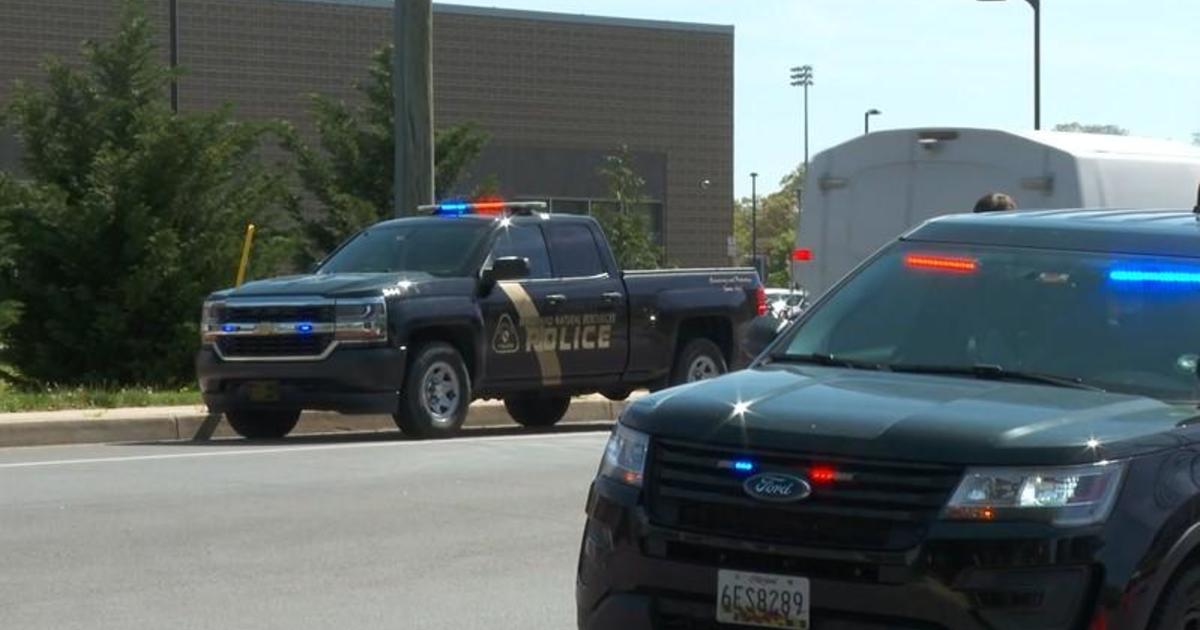Irene Leaves Nearly 1M In The Dark In Mid-Atlantic
BALTIMORE (AP) -- Hurricane Irene left nearly a million people without power in the Mid-Atlantic region Sunday, filling low-lying roads with water and bringing trees down on power lines, streets and rail tracks.
Crews began a long day of assessing and repairing damage from the storm's high winds and heavy rains. One utility warned of more power outages on Sunday as Irene's departing winds continued to knock down trees and tree limbs, and said it could be several days before everyone has electricity again.
Maryland State Police said the most serious hazard they were seeing Sunday was intersections with non-functioning traffic lights due to power outages. Other problems for power-restoration crews included continuing strong winds in some areas and flooded roads.
In Queen Anne's County, a woman was killed when a tree fell on a house and caused the chimney to collapse. Another person in the house was unhurt.
On Maryland's Eastern Shore, about 17 Dorchester General Hospital patients were being moved to Memorial Hospital in Easton after the Dorchester facility sustained water and wind damage. The hospital discharged about a dozen others.
In Southern Maryland, the Port of Leonardtown Public Park and surrounding streets were flooded, causing traffic backups in the St. Mary's County seat.
President Barack Obama declared states of emergency Sunday for the District of Columbia and Delaware, matching a declaration he made Saturday for Maryland. The designations mean they can receive federal help to respond to the storm. Maryland Gov. Martin O'Malley said that despite the large amount of cleanup work to be done, "we fared pretty well through this."
Delaware Gov. Jack Markell said the worst was over, but he urged those who evacuated to remain where they were.
"I know people will want to get home, but the roads are not drivable," he said. "There's a good chance they won't be able to get where they're going."
There were more than 120 closures of state-maintained roads in Maryland, with the bulk of the closures caused by high water and felled trees, according to the State Highway Administration.
Standing water on the roadways was especially prevalent on the upper Eastern Shore and in Harford and Cecil counties, said Lora Rakowski. She said parts of Maryland 7 in North East were under water, and that more flooding is expected as water flows down from Pennsylvania.
In Ocean City, where the eye of the storm passed within 50 miles in the early morning hours, damage appeared minimal. A few small trees along a major road were uprooted. Scattered sand dunes, about 2 feet high, covered areas of the boardwalk. The end of a wooden pier sagged and a wooden railing was askew. At the Quietstorm surf shop on the boardwalk, part of a wall where the shop's name is advertised had been torn off, exposing wiring.
Locals, however, said they had seen worse during storms.
LeAnn Price, 50, who has lived in the city for more than a decade, said she had been up walking the beach and boardwalk since 5:30 a.m. Sunday.
"I think we dodged a bullet," she said, adding that other storms had caused more damage.
Ocean City's wastewater plant, which was shut down as the storm approached, was in the process of being put back into service. Price said the storm didn't even make her lights flicker and she had no water problems.
"I was flushing all night," she said.
Ocean City officials said no injuries were reported. There was localized flooding after 12 inches of rain and sustained winds that reached 60 mph. The top recorded wind speed was an 80 mph gust.
The popular resort community, which was evacuated at midnight Thursday, reopened at 9 a.m. Sunday to business and property owners and planned to open at noon to visitors.
Charlie Koetzle, 55, a decade-long resident, walked the boardwalk around 8 a.m. He said the fact that there was so little damage would make people less likely to evacuate next time.
"A lot of people are going to be mad," he said.
Jason Butcher, 35, considered staying in Ocean City but a friend at the police department talked him into going to a shelter in Berlin.
"I think they did a good job, honestly," he said of law enforcement.
Washington appeared to have weathered Irene with fewer problems than other parts of the mid-Atlantic region, said Millicent West, the District of Columbia's emergency management director. She said the biggest problems were power outages and downed trees. Roughly 200 trees were down around the city, with new reports still coming in.
She said flooding was minimal so far, although there was some standing water in low-lying areas, including the Southwest Waterfront. A flood warning remained in effect, but major flooding was not expected.
In Baltimore, with 620,000 residents, about a quarter of the city was without power Sunday morning, including the home of Mayor Stephanie Rawlings-Blake. There were 400 reports of downed trees, including 200 on streets, but there were no reports of serious injuries, she said.
"We are grateful that it's not worse," Rawlings-Blake said. "We are in the recovery phase. There's still a lot of work to do."
A tornado struck homes in Lewes, Del. Another touched down in a wooded area of Wicomico County. No injuries were reported. Transportation services were starting to return to normal, with the Maryland Transit Administration restarting bus, light rail and subway service in the Baltimore area. In the Washington area, Metro bus and subway service were not affected by the storm. But both agencies said passengers should expect delays.
The Chesapeake Bay Bridge, which connects the Eastern Shore of Maryland to the western shore, and the Harry W. Nice Memorial Bridge, which links southern Maryland to the Northern Neck area of Virginia, reopened Sunday morning after being closed because of high winds.
(Copyright 2011 by The Associated Press. All Rights Reserved.)



